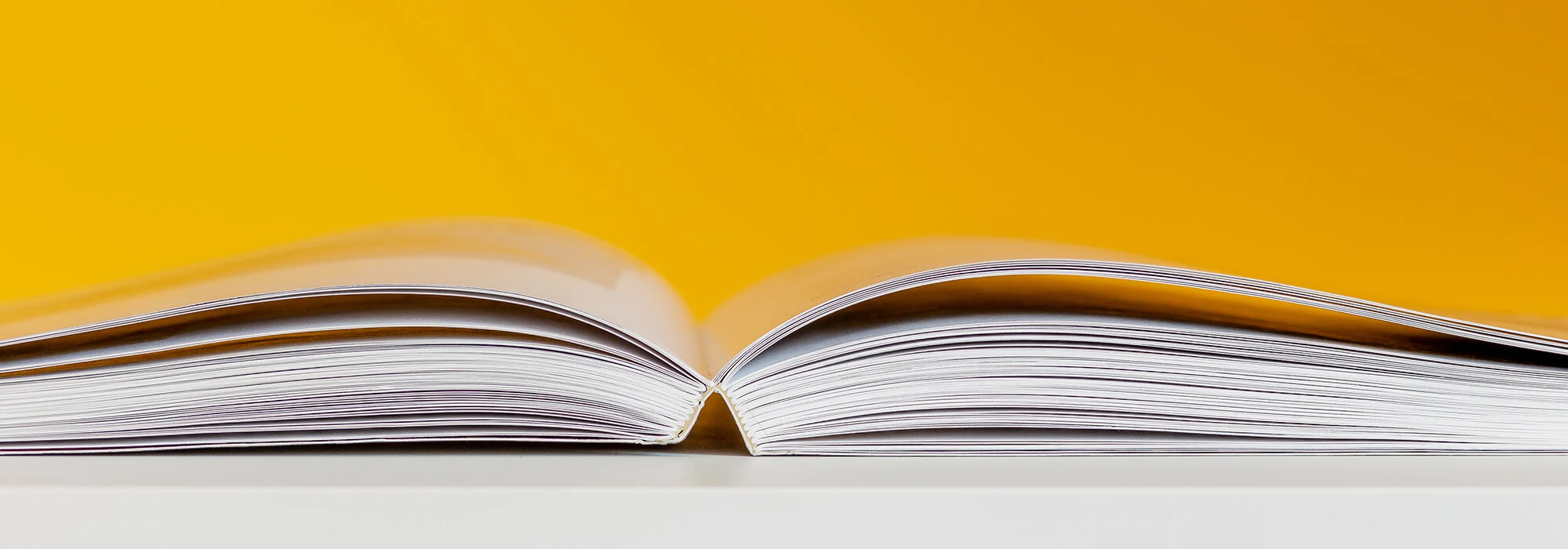Adding impact to your annual report — Binding
It is not uncommon for us to be asked to produce an A4 annual report, with front and back covers, when the client has no intention of going to print. Their thought process being that someone might want to print it out on the office printer.
The annual reports that do go to print tend to be short runs starting at as little as 15 copies. Today we offer a range of online interactive annual reports, more on these solutions later.
Starting from a basic print production on a low print run, here is a selection of dinging techniques, from the cheapest to the most expensive. Prices are marked using the restaurant listing method you often see, start in ‘£’ - ‘£££££’. Prices will vary enormously, so seek advice from your graphic design agency.
Digital, saddle-stitched
£
Saddle-stitched (or stapled) is the cheapest binding, but the page count needs to be below 40pp (pp=printed pages). These will be printed digitally where the ink will ‘sit up’ on the paper, even if you use an uncoated stock. ‘Sit up’ means the printed areas may look like they appear on top of the paper, rather than part of it.
Litho, perfect bound
££
Litho print is ‘print proper’ and for very short runs it is not cost-effective, your print run needs to be, ideally, in the mid-hundreds or early thousands.
The page count needs to be above 40pp and the document will have a spine. The bigger the number of pages, the bigger the spine. This is called perfect binding, however, we always recommend PUR binding. For those who want to know, PUR stands for Polyurethane Reactive, which means it is glued and gives a stronger bind so your pages don’t fall out.
Thread sewn binding
£££
This is a step towards bookbinding and is very strong. It can be used with a ‘standard’, heavy cover and works well for large reports that need to be sturdy, but do not need to be ‘case bound’.
Case bound
£££££
You may have noticed I have skipped ££££. That is because the four pound section holds many options, most have nothing to do with binding. I will deal with them in the ‘sister article’ Adding Impact to Your Annual Report: Special finishes.
Case bound is essentially binding like a hardback book. Take off the paper wrap of your James Patterson book and underneath is a case bound book, usually thicker than an annual report and ‘cloth bound’, it has material wrapped around the boards. We don’t need to do that, case bound can be wrapped in paper.
This technique gives a very high level of perceived value to the document. It will feel like something people will want to keep on their bookshelf. But bear in mind, it costs and has a longer production time.
Your viable options when looking at different binding techniques come down to cost, of course, but also the length of the print run. In addition, the final technique should be chosen to reflect the brand and messaging.

